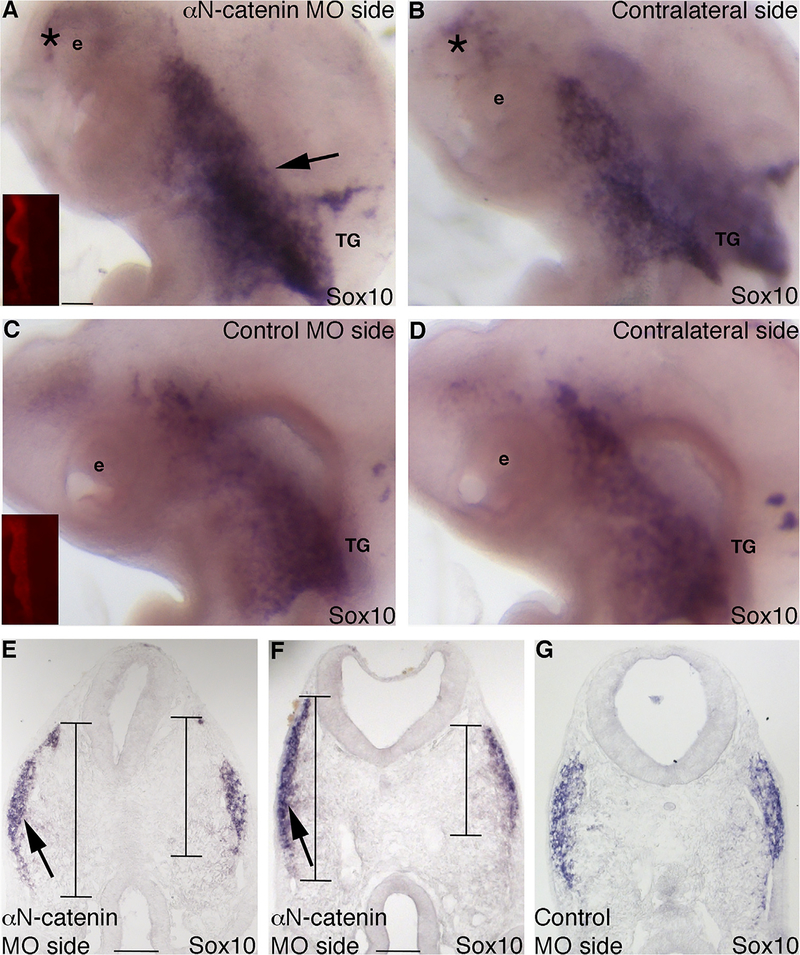Fig. 2.
Morpholino-mediated depletion of αN-catenin expands the dorsal–ventral domain of migratory neural crest cells forming the trigeminal ganglion in vivo. (A,B) Representative image of a lateral view of an embryo head following whole-mount in situ hybridization for Sox10 after electroporation with αN-catenin MO and re-incubation to HH15. (A) MO-treated and (B) contralateral sides. Inset image in (A) shows red fluorescence of the electroporated MO on the left side of the neural tube that is not visible after in situ hybridization at this later stage. Arrow in (A) indicates an increased Sox10-positive migratory neural crest cell domain on the MO-treated side that is not observed on the contralateral side (B) of the same embryo. Asterisk (*) in (A,B) points to neural crest cells entering the ocular region on the MO-treated side that are observed on the contralateral control side due to the transparency of the embryo. (C,D) Representative image of a lateral view of an embryo head following whole-mount in situ hybridization for Sox10 after electroporation with αN-catenin control MO (control MO) and re-incubation to HH15. (C) MO-treated and (D) contralateral sides. Inset image in (C) shows red fluorescence of the electroporated MO on the left side of the neural tube that is not visible after in situ hybridization at this later stage. (E–G) Representative transverse sections taken at the axial level of the developing trigeminal ganglia after αN-catenin (E,F) or control (G) MO electroporation, re-incubation of the embryo to HH14 (E) or HH15 (F,G), and Sox10 whole-mount in situ hybridization. Arrows and lines in (E,F) reveal a dorsal–ventral expansion of the migratory neural crest cell domain on the electroporated side of the embryo (left) compared to the contralateral side of the same section (right), with no change in domain size observed in the control (G). e, eye; TG, trigeminal ganglion. Scale bars in all images are 100 μm, with scale bar in (A) applicable to (B–D) and scale bar in (F) applicable to (G).

